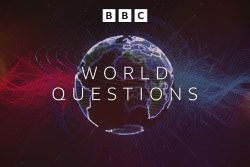“Liberation Day!” exulted President Trump in the White House Rose Garden on Wednesday, while he held up charts listing countries and the size of tariffs which would be imposed on their exports to the US. Humourist Stephen Colbert had a different take on the occasion, remarking drolly, “Thanks to Donald Trump, America is finally free from the tyranny of being able to buy stuff from other countries.”
Subsequently the White House issued what looked for all the world like a mathematical formula according to which, it was claimed, the tariff rates for each nation were arrived at. It didn’t require anything so complicated. In fact the calculation it turned out, was quite straightforward: they took the trade deficit for the US in goods with a given country, divided it by the total goods imported from that country and then divided that number by two.
How after all that arithmetic they still managed to apply the base rate of 10% to remote Antarctic islands populated only by penguins and elephant seals is not something which is obvious to the average observer. The Heard and McDonald Islands are about two-and-a-half thousand miles south-west of Australia and were last visited by humans in 2016. “Poor old penguins,” said the Australian Trade Minister, “I don’t know what they did to Trump …” There were other puzzling cases too, such as Norfolk Island which received a tariff of 29% even though it has a population (human, this time) of only 2,200.
President Trump’s aim is to eliminate trade deficits by applying tariffs with a view to resuscitating manufacturing in the US as well as protecting jobs there. Many economists remain unconvinced. Professor Portes of King’s College London was reported by the BBC as saying that while it would reduce bilateral trade deficits between the US and other countries, it would not reduce the overall deficit between the US and the rest of the world, because that is propelled not just by trade barriers, but by how the US economy works.
Among other things, Americans spend and invest more than they earn, which in turn means that the US buys more from outside than it sells. If that continues, then the US deficit will also continue.
Thomas Sampson of the London School of Economics was quoted as saying: “The formula is reverse engineered to rationalise charging tariffs on countries with which the US has a trade deficit. There is no economic rationale for doing this and it will cost the global economy dearly.”
Several economists have harked back to the era of the Smoot-Hawley Tariff Act. Passed in 1930 as a protectionist measure it increased tariffs on more than 20,000 items imported to the US following the Great Crash of Wall Street the previous year. Duties on imports were raised by an average of 20% and the Bill was signed into law by then President Hoover against the advice of leading economists.
The declared purpose of President Trump’s tariffs sounds identical to that of Hoover, whose intention was also to help manufacturing and jobs. In fact the consequences of his Act achieved exactly the opposite of what he intended because other nations applied retaliatory tariffs, resulting in a dramatic decline in global trade as well as in US exports, and a deepening of the Depression. Economists traditionally regard this as a cautionary tale.
The main difference between 1930 and now is that tariffs then were the consequence of a Congressional Act, while President Trump is simply issuing executive orders. Trade agreements are the province of Congress, and while a few Senate Republicans support a Bill introduced on Thursday which would require Congressional approval for new tariffs, even if taken up it has little hope of success in the Senate, let alone the House of Representatives. So for the time being the President is being allowed by his legislature to crash ahead causing turmoil in the markets and chaos in international trade arrangements.
Where tariffs are concerned, President Trump has no friends or allies – no one escapes the baseline of 10% ‒ and has taken no account of poverty or crisis in a given country. Thus Laos and Cambodia, two of the poorest nations in the world have been hit with some of the highest rates because they are part of the Chinese supply chain.
And then there is Guyana, which was enjoying a warm and fuzzy feeling following Mr Marco Rubio’s visit, but has now been hit with one of the higher tariffs of 38%, although on Friday Vice President Jagdeo did qualify this to say that oil, aluminium ore and gold were exempt. That still leaves US$47.5m of exports subject to the tariff.
ike many other countries Guyana is seeking to engage Washington on the matter and there have been some suggestions that the tariffs were intended as an opening salvo by President Trump in order to secure better trade deals, but few are convinced of this. The likelihood of a global recession becomes a greater certainty if other states retaliate, and many are considering this while some have already done so, such as Brazil in our region.
What has sent markets plummeting even further than the fall which followed the tariff announcement has been the retaliatory measures being implemented by the other big player on the planet. China’s White House tariff rate now totals 54%, and it has applied its own “countermeasures” constituting a minimum additional 34% tariff on all imported US goods, export controls on seven rare earth elements and an expansion of the “unreliable entity” list which would allow it to take punitive actions against certain foreign companies.
President Trump accused Beijing of ‘panicking’. On the contrary, it has been very astute, depriving the US of rare earth elements essential to computer electronics, and selecting companies and sectors which would put pressure on sensitive political constituencies.
Everyone agrees that a global recession could be looming, the investment bank JP Morgan estimating the chance of that happening before yearend at 60%. In addition, many individual countries could be driven into economic recession. Businesses have complained that because of the uncertainty it is difficult to know how to plan, while even some Republicans think that the American consumer will face higher prices, along with others globally.
The fact that all three major stock indexes in the US plunged more than 5% on Friday did not seem to perturb President Trump, who regarded it as a case of short-term pain for long-term gain. While that figure does not represent a crash, which is a term usually applied to a fall of over 20%, some analysts say that depending on events it could turn into one.
In the meantime at this stage, it looks as if the only hope for a rethink in the White House would be if there were political pressure on the President from his party and his constituents. Even if that happens, it will not be an immediate development.









